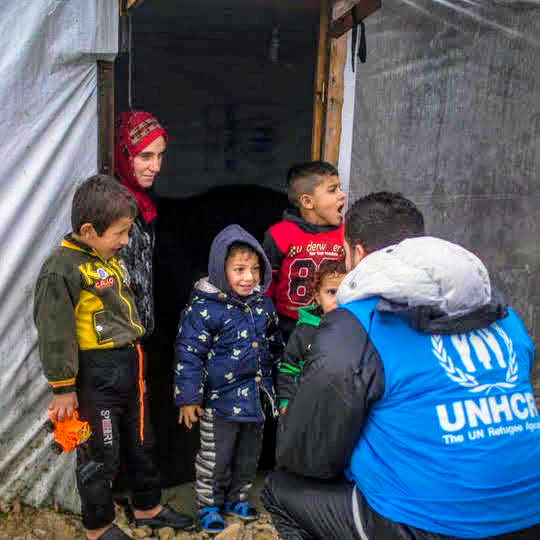Monitoring of the Effects of Economic Deterioration on Refugee Households, Wave 2 (RON) 2020
Lebanon, 2020
Get MicrodataIdentification
UNHCR-LBN-MEED-2020-WAVE2-RON-v2.1
Monitoring of the Effects of Economic Deterioration on Refugee Households, Wave 2 (RON) 2020
| Name | Country code |
|---|---|
| Lebanon | LBN |
The Monitoring of the Effects of the Economic Deterioration on Refugee Households dataset is a Phone survey of Syrian and non-Syrian households to monitor the changes over time in key areas in the context of the deteriorating economic situation in Lebanon.The UNHCR call center was used to conduct the two waves of data collection: 20-28 February (Wave I) and 17 April-15 May (Wave II). Several call attempts were made at different times of the day to reach the largest possible number of households.
After the Wave I of the survey, which was collected before the first case of Covid 19 was reported in Lebanon, the Wave II was conducted to account for the impacts of the spread of the Covid 19 virus on refugees, the level of awarness among them and their accessibility to hygiene items and health care services. This dataset includes only the non-Syrian refugees cases.
Sample survey data [ssd]
Household
Version
v2.1: Edited, cleaned and anonymised data.
2020-06-19
Scope
The questionnaire included key indicators on household demographics, shelter, expenditures, livelihoods, debt, coping strategies, food security and consumption, and health. In addition, it included indicators on Covid 19, its impacts on access to services, levels of awarness, and access to PFEs and hygiene items.
The scope includes:
- key indicators on household demographics
- accomodation
- rent
- employment
- health/ Covid 19
- food security
- livelihoods
- food consumption
- debt
- coping strategies and assistance
- intention to return
- education
| Topic |
|---|
| Health |
| Education |
| Food Security |
| Livelihood & Social cohesion |
| Return |
| Shelter/Other Infrastructure |
| Income Generation |
| Health Care Referral Services |
| Domestic Needs/Household Support |
| COVID-19 |
Coverage
National coverage
Producers and sponsors
| Name |
|---|
| UNHCR |
| Name |
|---|
| WFP |
Sampling
In order to facilitate regular monitoring of the change for households nationally, this monitoring approach employed a phone survey approach conducted on a quarterly basis with wave 1 starting in February 2020 and wave 2 (presented herein) starting in April 2020.
To achieve this, a simple random sampling approach was used in both waves, extracted from UNHCR database in Lebanon. Two nationally representative samples were extracted: (1) Syrian refugees, and (2) Non-Syrian refugees. Each sample is estimated at 500 (total 1,000) refugee households.
To account for non-response rate, the data samples were enlarged: 1,000 Syrians and 1,000 non-syrians.
The initial response rate in WAVE 2 was very low (40%); to increase the response, UNHCR used WhatsAPP (via partners) to establish contact with refugees and managed to increase the response rate to 60%.
No weighting was applied for this dataset since it includes only non-Syrian records.
Survey instrument
The questionnaire included key indicators on household demographics, shelter, expenditures, livelihoods, debt, coping strategies, food security and consumption, and health. In addition, it included indicators on Covid 19, its impacts on access to services, levels of awarness, and access to PFEs and hygiene items.
Data collection
| Start | End |
|---|---|
| 2020-04-17 | 2020-05-21 |
| Name |
|---|
| UNHCR |
Data Access
Please cite as follows:
(2020) Monitoring of the effects of Economic Deterioration on Refugee Households, Wave 2 (RON) , UNHCR microdata library, https://microdata.unhcr.org
Contacts
| Name | Affiliation | |
|---|---|---|
| Curation Team | UNHCR | microdata@unhcr.org |
Metadata production
UNHCR-LBN-MEED-WAVE2-RON-2020-v2.1
| Name |
|---|
| UNHCR |
2020-06-19
Metadata version
UNHCR-LBN-MEED-WAVE2-RON-2020-v2.1
